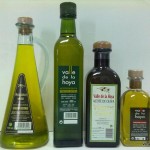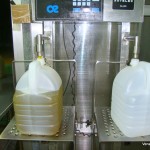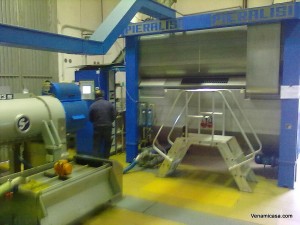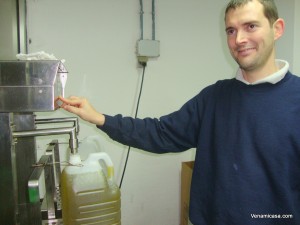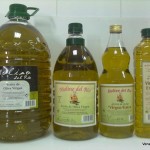The Olive Oil Processing at Almazara Molino del Motrotón is taken inmediatly after harvesting. Just 24 hours later the fruit begins to ferment and that will affect the quality and the “organoleptic” characteristics of the oil, producing typical rusty, damp and earthy odours.
The Extra Virgin Olive Oil produced at Almazara Molino del Motrotón is elaborated employing the most advanced equipment by the continuous system, all the procedures used are only physical which means that no chemical products are added.
Delivery, cleaning, washing and weighing of the olives.
When the olives arrive to the Almazara are discharged into a hopper. Cleaning and washing must be efficient in order to remove leaves, branches, mud and any remains. It is collected a sample of each farmer’s olive harvest in order to know at the laboratory the amount of oil containing their olive harvest.
From the process of olive oil is used throughout, even the olive leaves are a very good food for the bulls.
Once the olive harvest is clean is transferred to a hopper for weighing.
Preparation of the paste:
The continuous system is splitted up in three steps:
- Grinding
- Beating
- Centrifugation
From the weighing olives (hoppers of 45.000 kg) the Grinding or milling of olives is necessary to break-up the vegetable fibres of the olive containing the oil, forming a paste of oil, water, bond and the olive skin. This step is performed by modern mechanical hammer crusher system, that have replaced traditional millstones and cone shaped, processing 5.000 kg. per hour.
Once they are milled, the product is divided into three different machines. The first one contains 80% of water and 20% of olive oil, resulting from the grinding previously detailed. The second one, is the blend of skins and pits coming from the olives, and at last comes the Extra Virgin Olive Oil.
A slow beating of the paste obtained after grinding takes places in order to gather the maximum number of drops of oil. A smoothie where separates the oil component (where oil concentrates), the aqueous (water of the olive) and the grape marc (composed of broken bones, skin and pulp). The oil extraction happens in cold conditions, with a temperature between 30º and 35º C. Under these conditions there is no flavor or natural propierties loss.
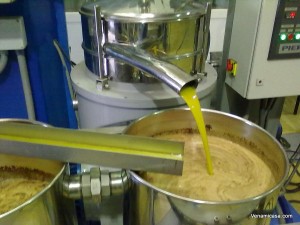 After obtaining an homogeneous paste obtained after grinding the olives, the process of centrifugation takes place at Almazara Molino del Motrotón in Turis (Valencia), processing processing 120.000 kg. by day. An horizontal centrifuge separates solids from liquids (water, oil and pomace: pulp, skin and bones) and the vertical centrifuge separates the liquids (water and oil).
After obtaining an homogeneous paste obtained after grinding the olives, the process of centrifugation takes place at Almazara Molino del Motrotón in Turis (Valencia), processing processing 120.000 kg. by day. An horizontal centrifuge separates solids from liquids (water, oil and pomace: pulp, skin and bones) and the vertical centrifuge separates the liquids (water and oil).
The water passes and a settling basins gradually be sent to a pond for evaporation.
The bond, the skin and the olive waters “alperujo” come to a sump and from here to a storage hopper to be removed by trucks destined for another process to extract the oil from the bone, called pomace oil. The olive fruit is used throughout.
The conditions of the material used for milling is very important because the parts can get worn and leave traces of metal milled mass. These factors could produce oxidation and coloration of the oil and an unpleasant metallic flavour.
Separation and filtration:
Through a process of decanting that lasts more than 20 days after the grinding, ensures that all organic waste to be deposited at the bottom of the tanks, keeping the oil with all its properties and yield the precious oil.
Finally, filtration can be done in order to remove definitively all the impurities.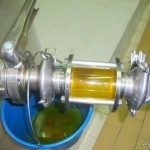
The oil passes large stainless steel silo remain where parameters of temperature, light and no suitable insulation to keep intact all the qualities of the Extra Virgin Olive Oil ready to be packaged and sold. The Oil cellar has 18 stainless steel tanks with a storage capacity of 650.000 liters.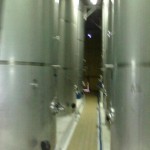
During the process there is a developed oil control at the Laboratory to ensure food security (APPCC) and a control produc traceability.
Packing. Brands: Molino del Motrotón, Valle de la Hoya, Molino del Rio and Marquesat del Magre.
The last step is the packaging and labeling. Bottling is made in the Almazara Molino del Motrotón by manual means and specialized personnel the last week of February and the first week of March. There are different formats depending on volume and type of recipient.
Look at the color of the oil… because the smell is indescribable!
